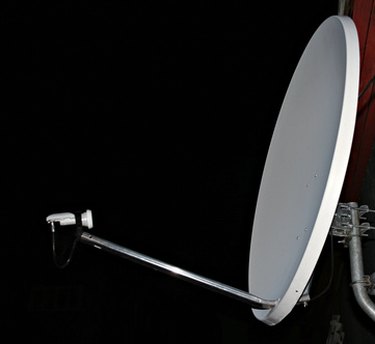
A satellite finder meter is a specialized device designed to help you position your satellite dish to receive the strongest signal for best television reception. They are simple to operate and are designed to be used while you're at the satellite dish so you don't have to check your signal strength at your television set. There are both analog and digital models available, both with and without internal power supplies.
Step 1
Connect one end of the coaxial cable to the barrel connector on the satellite dish's low noise block downconverter (LNB) and the other end to the satellite finder meter. The LNB is the arm that faces the reflector dish.
Video of the Day
Step 2
Loosen the nuts that allow the dish to be adjusted both along the horizontal (azimuth) and vertical (elevation) planes.
Step 3
Move the dish from side to side along the horizontal plane until you determine the position at which the satellite finder meter displays maximum signal strength.
If you're using an analog meter, you will find this position in increments. First, adjust the gain knob so the meter's needle reads half strength. As you move the dish closer to its optimal position, the meter may exceed maximum. If this happens, readjust the gain lower and continue to move the dish until you determine the position where maximum signal strength is received.
Step 4
Raise and lower the dish along the vertical plane until you determine the elevation at which the satellite finder meter displays maximum signal strength. If using an analog meter, you may have to adjust the gain as in the previous step.
Step 5
Tighten the nuts to lock your satellite dish into place.
Step 6
Disconnect the coaxial cable from the LNB on the satellite dish.
Video of the Day